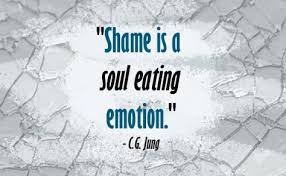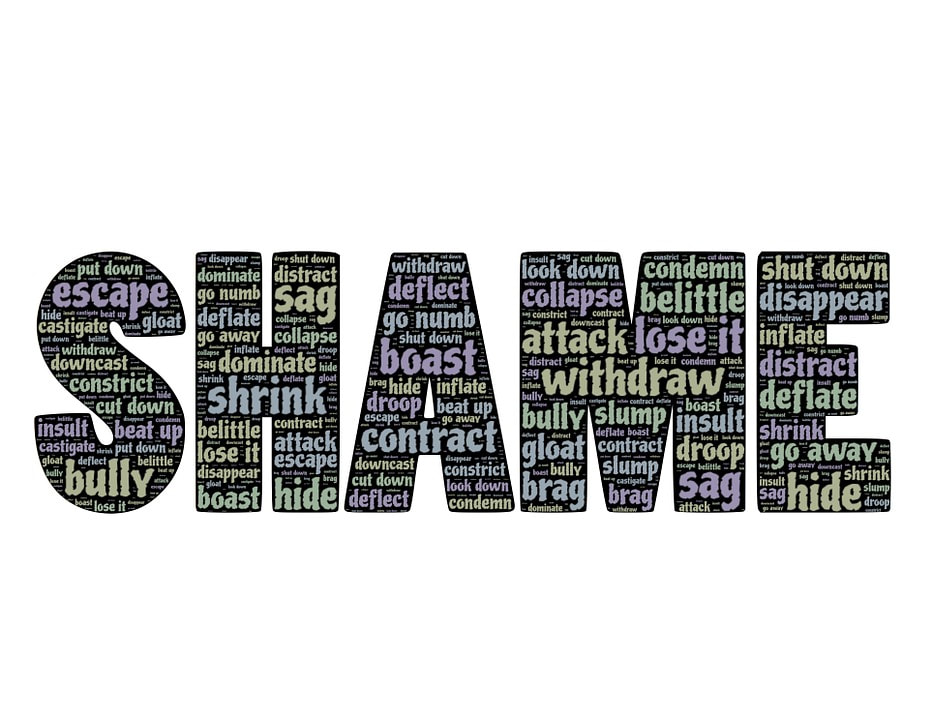
Shame is often present in the therapy space, linked to and often underlying, many issues such as depression, anxiety, post-traumatic stress disorder, substance abuse, eating disorders, anger, domestic violence, among others. It's probably the greatest reason that people, especially men, find it hard to start therapy, have many false-starts in the therapy space until they find a good fit between themselves and a therapist, and sometimes even the reason behind giving up on the therapy process altogether (in effect, giving up on themselves.)
It is, therefore, not only one of the primary reasons for therapy, but it is the therapy work that those in therapy find most confronting. It is also the fundamental reason for much of the success in psychotherapy as a real, new way to live can be forged in the pain of the shame. Individuals can become free to choose how to live.
How do humans react to shame? Nathanson in 1992 called the 4-type model he composed the Compass of Shame theory. Later, Elison, Lennon and Steven (2006) added a fifth pole for those with an adaptive or useful response to shame. They are:
- Attack Self. That is, internal blame, and inwardly directed anger.
- Withdrawal. This describes the tendency to isolate or shrink oneself when shamed - flying under the radar.
- Avoidance. As well as avoiding situations of potential shame, this relates to becoming emotionally distant to avoid the shame, or to appear very disinterested, as if the shaming thing was of no matter.
- Attack Other. Outward anger, blaming of others, as if the thing triggering you is all caused by someone else's actions, not your own reactions.
- Adaptive. This is the additional one, the one where we assess ourselves, learn something, apologise or make good, and move on with greater wisdom.

Therapy works best when there is a good fit between the therapist and the client. I would even say that without a significant rapport and solid level of trust, work with shame may well be fruitless. It is therefore important to first establish trust. That is the initial work of therapy, approaching that uncomfortable place with care, compassion, awareness, and consistency.
In my experience, many clients present with one particular issue, only to find, once we have established a working relationship ship of trust, and ideas and thoughts are flowing, that there is shame present. It's often found to have commenced in childhood or early teens and, rather than being able to resolved over time, has been compounded by further shaming events woven into people's lives. This, I find, results in a person more and more in hiding, more depressed, more prone to addictions, and less and less happy with the way they are living their lives.
The remarkable thing is that, despite this, people have a wellspring of images and concepts of who they would prefer to be. So often, there is an extraordinary person just waiting to break free and live.
You see, there is hope. In the therapy space we can take the shame and get to know it. Learn how it works, learn it's secrets and techniques. We can find out what it is doing in you and we can take it's power from it, and put it back into your hands. This externalising method, one of the hallmarks of Narrative Therapy, can really assist people to break away from the shame, and with the story of who they would prefer to be as their goal, begin the task of renewal where, perhaps for the first time, they can be who they want to be.
It is always a privilege to watch that new version of a person take hold, grow, then take flight.
References and reading:
Elison, Lennon and Steven (2006) Investigating the Compass of Shame: The development of the Compass of Shame Scale Social Behavior and Personality An International Journal 34(3):221-238 · January 2006
Nathanson, D.L., (1992). Shame and pride: Emotion, sex and the birth of the self. New York, NY: W. W. Norton & Company.
White, Michael. Narrative means to therapeutic ends. Norton, 1990.
https://dulwichcentre.com.au
Comments open below:


 RSS Feed
RSS Feed